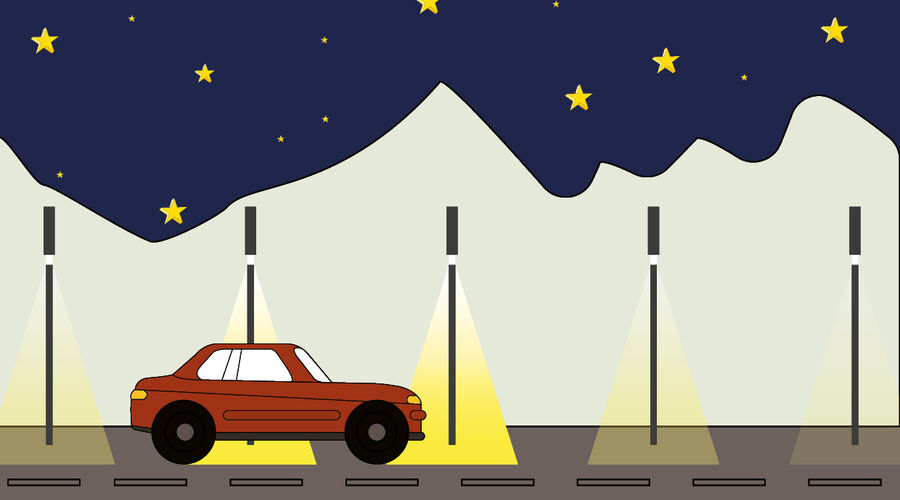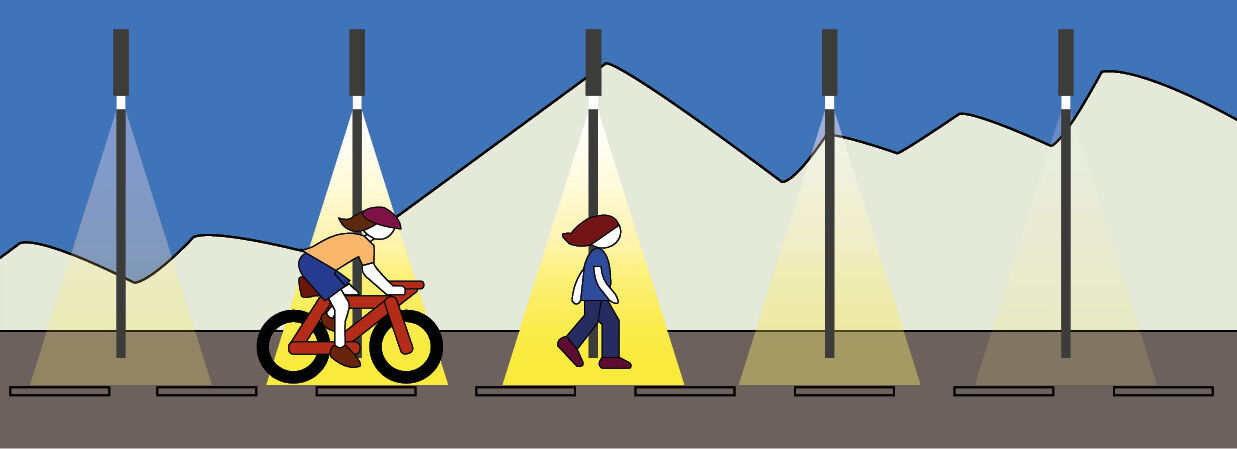PILG ➔ Photinus Intelligent Light Guard
How does demand responsive lighting work?
Example: A new bicycle track with 10 light fittings should provide more safety for users. Based on the given facts and demands the light will be switched off or remains in a basic dimming mode (starting from 10% to any percentage up to 100%) as per requirements.
When a user (cyclist, pedestrian etc.) approaches the 1st luminaire that one and the next 2 luminaires will be turned up to 100%. As soon as the user reaches the second luminaire the 4th one will be tuned up, when the user reaches the 3rd luminaire the 5th one will be turned up and so on. The number of the "neighbour luminaires" and the illuminated time can be set individually. It is called moving light as the light is moving along with the user.
How does this technology work?
Each luminaire contains a PIR-sensor, a controller and an antenna. To control the luminaire in real time, only one luminaire has a GPS-controller as well as a GPS-antenna. This enables the luminaires to communicate among each other and control the demand responsive light in real time.
PILG ➔ Photinus Intelligent Light Guard
Latest development on the lighting market
The intelligent use and control of light is one of the latest developments in lighting. Due to this method we counteract the increasing lighting pollution as well as energy waste.
Photinus opens up entirely new possibilities for the use of solar luminaires. It is possible to achieve the same light output / light intensity as with electrified street lighting.
Photinus was the first of all solar luminaire producers to discover this advantageous system and developed the proper technology for it. Meanwhile large projects in Germany and the Netherlands were implemented at client´s full satisfaction.

PILG ➔ Photinus Intelligent Light Guard
Advantages of this innovative solution
This unique technology provides the client with multiple benefits:
- Safety: by tuning up the light which only happens when passing the area the energy saving effect is up to 70% compared with full operation at 100%. This saved energy can be provided on demand at 2 to 3 fold light intensity. This highly increases the sense of safety.
- Costs: The overall costs for the client will be considerably reduced by the following arrangements:
- The number of luminaires can be reduced by about 35%. This means for a bicycle track of 1 km length the mast distance can be increased from 35 m to 50 m and therefore the number of luminaires can be reduced by 10 pieces.
- In this case the same lux levels from the same luminaire can be achieved
- Because of the reduced number of solar luminaires also the installation costs will be considerably lowered.

